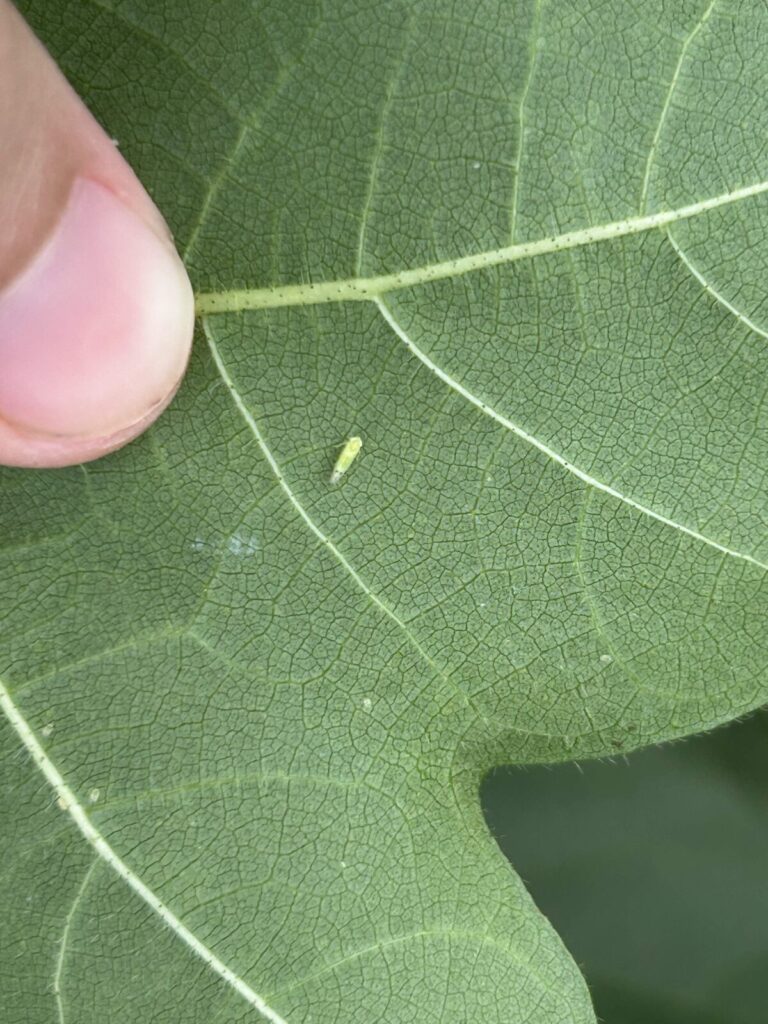
The two-spot cotton leafhopper, more commonly known as the cotton jassid (Amrasca biguttula biguttula), has recently been detected in Georgia cotton fields. Native to the Indian subcontinent and parts of Asia, the cotton jassid was first reported in Puerto Rico in 2023, in Florida in early 2025, and was observed in Georgia on July 9, 2025. As of August 5, 2025, confirmed detections have occurred in 12 counties across the state, including low-level observations in Candler and Evans Counties.
Several of the initial detections in Georgia were found on okra, which appears to be a preferred host plant. Later detections have been confirmed in cotton fields. The pest feeds on the undersides of leaves, introducing salivary toxins that cause yellowing, reddening, and browning of foliage. This damage, often referred to as “hopperburn,” can lead to complete desiccation of plants. Additional symptoms include puckering and crinkling of leaves. Higher pest populations are often observed on end plants, along field edges, and in areas where skips in the plant stand occur.
The cotton jassid has a short life cycle that allows populations to increase rapidly. Eggs hatch within three to four days. Nymphs pass through five instars over eight to eleven days, and adults live for two weeks or longer. In other parts of the world, this insect is considered an economic pest of cotton and other crops, including corn, soybean, peanut, okra, sunflower, eggplant, potato, and pea.
When spraying cotton fields or scouting, be alert for areas that appear unusual or “off,” especially near field edges. Leaves may be curled or puckered, and symptoms can sometimes resemble potassium deficiency. If these symptoms are observed, please report them to your local Agriculture and Natural Resources (ANR) Extension agent so the field can be inspected to verify the presence of the insect. We are actively working to document the distribution of cotton jassid in Georgia. This insect has been observed at very low numbers in fields in Evans and Candler Counties.
Scouting is essential to manage this pest. The preliminary threshold for treatment is three nymphs per leaf in the top six inches of the plant, combined with visible symptoms of injury. Growers should take care not to confuse cotton jassid nymphs with aphids when scouting. Preliminary insecticide trials in Georgia indicate that pyrethroids such as bifenthrin alone do not provide acceptable control.
As this pest is new to Georgia, growers are encouraged to monitor fields closely, report suspected infestations, and work with their local UGA Cooperative Extension office to determine appropriate management strategies.
For additional information or to report observations of cotton jassid, contact your county Extension office.